In this lesson, you will learn how to add and subtract single-digit numbers with a jump through the digit. Solving interesting tasks, you will learn the algorithm for adding and subtracting numbers with the transition through a dozen and get acquainted with the addition table of single-digit numbers up to 20. You will have the opportunity to practice the previously studied material on interesting examples.
Topic:Introduction to basic concepts in mathematics
Lesson: Addition and subtraction of single-digit numbers with the transition through the discharge. Addition table up to 20
The graphical model can be used to explain addition of single-digit numbers with the transition through a dozen.
How can you add 9 and 7 together?(Fig. 1)
Rice. one
The graphical model shows that the first term 9 must be supplemented to 10. To do this, we divide the second term into two parts, one of which is equal to the number 1, since
9 + 1 = 10, so 7 = 1 + 6. (Fig. 2)

Rice. 2
Let's do the addition by parts:
9 + 7 = (9 + 1) + 6 = 10 + 6 = 16
Answer: 9 + 7 = 16.
You can add these numbers in a different way. (Fig. 3)

Rice. 3
The second term 7 can be supplemented to 10. To do this, we divide the first term into two parts, one of which is equal to the number 3. Therefore, 9 = 3 + 6.

Rice. 4
Let's do the addition by parts:
7 + 9 = (7 + 3) + 6 = 10 + 6 = 16
The first term is 9, it lacks up to 10 one unit, so we break the second term into parts. 5 is 1 and 4. We add to 9 first one unit, and then the remaining four units.
9 + 5 = 9 + (1 + 4) = 14
The first term is 6, it lacks up to 10 four units, so we divide the second term into parts: 4 and 2. We add 4 to 6 first and get ten units, and then the remaining two units.
6 + 6 = 6 + (4 + 2) = 12
The first term is 4, it lacks up to 10 six, so the second term 8 is divided into parts: 6 and 2. We add six units to 4 first and get ten units, and then the remaining two units.
4 + 8 = 4 + (6 + 2) = 12
In the reduced 15, there are five units, so we divide the subtracted 7 into parts: 5 and 2. We subtract five units from 15 first, we get 10. Then we subtract the remaining two units from ten.
15 - 7 = 15 - (5 + 2) = 8
In the reduced 16, there are six units, so we divide the subtracted 9 into parts: 6 and 3. First subtract six units from 16, we get 10. And then subtract the remaining three units from 10.
16 - 9 = 16 - (6 + 3) = 7
In the reduced 12, there are two units, so we divide the subtracted 4 into parts: 2 and 2. Subtract 2 from 12, we get 10. And subtract 2 from 10.
12 - 4 = 12 - (2 + 2) = 8
Answer: 12 - 4 = 8.
It is not always convenient to use the method of addition and subtraction in parts with the transition through a dozen, so you need to learn single digit addition table up to 20 by heart.
The figure shows a table with which it will be easier for you to learn the cases of adding single-digit numbers up to 20. (Fig. 7) 
Rice. 7
In each column, the first term is the same, and the second is increased by one, which means that the sum will also increase by one. Find the value of these sums.
9 + 2 \u003d 11, therefore: 9 + 3 \u003d 12, arguing like this, we fill out the entire table. (Fig. 8)

Rice. eight
Each line contains sums with the same answers. Choose the way it will be easier for you to remember the answers: in columns or in rows. If you learn well the table of adding single-digit numbers up to 20, then it will not be difficult for you to perform subtraction of single-digit numbers within 20.
Bibliography
- Aleksandrova L.A., Mordkovich A.G. Mathematics 1st grade. - M: Mnemosyne, 2012.
- Bashmakov M.I., Nefedova M.G. Mathematics. 1 class. - M: Astrel, 2012.
- Bedenko M.V. Mathematics. 1 class. - M7: Russian word, 2012.
- Social network of educators ().
- 5class.net().
- self-taught ().
Homework
1. Remember how to correctly add and subtract single-digit numbers with a transition through the discharge.
2. Help the frog solve the examples.

3. Solve the examples and color the drawing.

Counting within the first two tens with the transition through the category is a very difficult topic for first-graders.
And not only for them. Not everyone can easily and quickly add and subtract numbers with the transition through the ten.
Therefore, I propose to download this notebook, or rather, a set of sheets with tasks.
Examples have already been written here, solutions must be entered in the boxes. Therefore, the child is easier from the fact that he does not have to rewrite these examples on his own.







Download: (downloads: 1550)
Dear readers!
All materials from the site can be downloaded absolutely free of charge. All materials are checked by antivirus and do not contain hidden scripts.
The materials in the archive are not watermarked!
The site is replenished with materials based on the free work of the authors. If you want to thank them for their work and support our project, you can transfer any amount that is not burdensome for you to the site account.
Thank you in advance!!!
The very first examples that a child gets acquainted with before school are addition and subtraction. It is not so difficult to count the animals in the picture and, crossing out the extra ones, count the rest. Or shift the counting sticks, and then count them. But for a child it is somewhat more difficult to operate with bare numbers. That is why it takes practice and more practice. Do not stop studying with your child in the summer, because over the summer the school curriculum simply disappears from a small head and it takes a long time to catch up on lost knowledge.
If your child is a first-grader or just going to first grade, start by repeating the composition of the number in the houses. And now we can take examples. In fact, addition and subtraction within ten is the first practical application by a child of knowing the composition of a number.
Click on the pictures and open the simulator at maximum magnification, then you can download the image to your computer and print it in good quality.
It is possible to cut A4 in half and get 2 worksheets if you want to reduce the load on the child, or let them solve one column a day if you decide to work out in the summer.
We solve the column, celebrate successes: cloud - not very well solved, smiley - good, sun - wonderful!
Addition and subtraction within 10

And now scatter!


And with gaps (windows):

Examples for addition and subtraction within 20
By the time the child begins to study this topic of mathematics, he should know very well, by heart, the composition of the numbers of the first ten. If the child has not mastered the composition of numbers, it will be difficult for him in further calculations. Therefore, constantly return to the topic of the composition of numbers within 10 until the first grader masters it to automatism. Also, a first grader should know what the decimal (bit) composition of numbers means. In math class, the teacher says that 10 is, in other words, 1 ten, so the number 12 consists of 1 ten and 2 units. In addition, units are added to units. It is on the knowledge of the decimal composition of numbers that the methods of addition and subtraction within 20 are based. without going through ten.
Examples for printing without jumping through a dozen mixed:

Addition and subtraction within 20 moving through ten are based on the methods of adding up to 10 or subtracting to 10, respectively, that is, on the topic "composition of the number 10", so take a responsible approach to studying this topic with your child.
Examples with a transition through a dozen (half of the sheet is addition, half is subtraction, the sheet can also be printed in A4 format and cut in half into 2 tasks):



Addition and subtraction tables are used to teach children to count or to test their skills in addition and subtraction. These two tasks use different tables. Both versions of the tables can be downloaded and printed on this page
Addition table up to 20 print and download
The addition table is used to teach children. The vertical leftmost column and the horizontal top row are summands. In order to add two numbers, you need to find them in a vertical column and in a horizontal row. The intersection forms the sum of these two terms. For example, as shown in the figure below, 6 + 5 = 11.
You can print the addition table up to 20 in Word or PDF format. If you need an addition table up to 10, it can be easily done by deleting unnecessary cells in the Word format. If you need an addition table more than up to 20, then you can download the addition table in Excel format and add the necessary columns and rows by copying.
 |
|
 |
|
 |
Subtraction table up to 20 print and download
The subtraction table uses the same addition table that can be printed above. Suppose we need to solve the example 14 - 8 = 6. Using the subtraction table, we find in the table field a diagonal with a decreasing 14. In the figure below, this diagonal is highlighted in light green. We select the number 14 on this diagonal, which is opposite the subtracted 8. The resulting number 6 in the top row is the answer.

As you can see, the same addition and subtraction table is used for addition and subtraction, which you can print or download from the links above in different formats.
Subtraction table without answers print and download

 |
Everything is simple, isn't it?
In order to learn how to solve examples, you need to solve them.
Everything is simple, isn't it?
But where can I get many, many examples so that the child can develop a confident skill in solving mathematical examples within the first two dozen?
It is not recommended to buy school workbooks for preschoolers.
And here you can download sheets with examples here.
By the way, they need to be printed in several copies at once.
And if for the first time the kid makes a mistake when solving, after a while it will be possible to repeat the work.
And then decide on speed. Let the child himself mark the time it took him to solve all the examples.




Dear readers!
All materials from the site can be downloaded absolutely free of charge. All files are checked by antivirus and do not contain hidden scripts.
Pictures in the archives are not watermarked.
The site is replenished with materials based on the free work of the authors. If you want to thank them for their work and support our project, you can transfer any amount that is not burdensome for you to the site's account.
Thank you in advance!!!

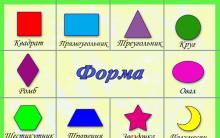
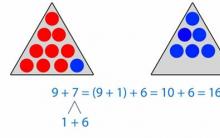
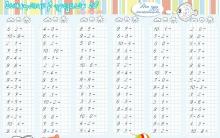
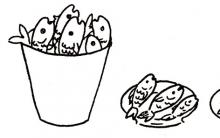
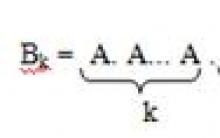
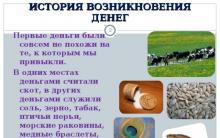




Map second language of geography
Literary games in elementary school Games for children in the library elementary school
Presentation "role-playing games in dow"
The green color on the physical map shows what the colors on the physical map represent
Intellectual game "through the pages of history"